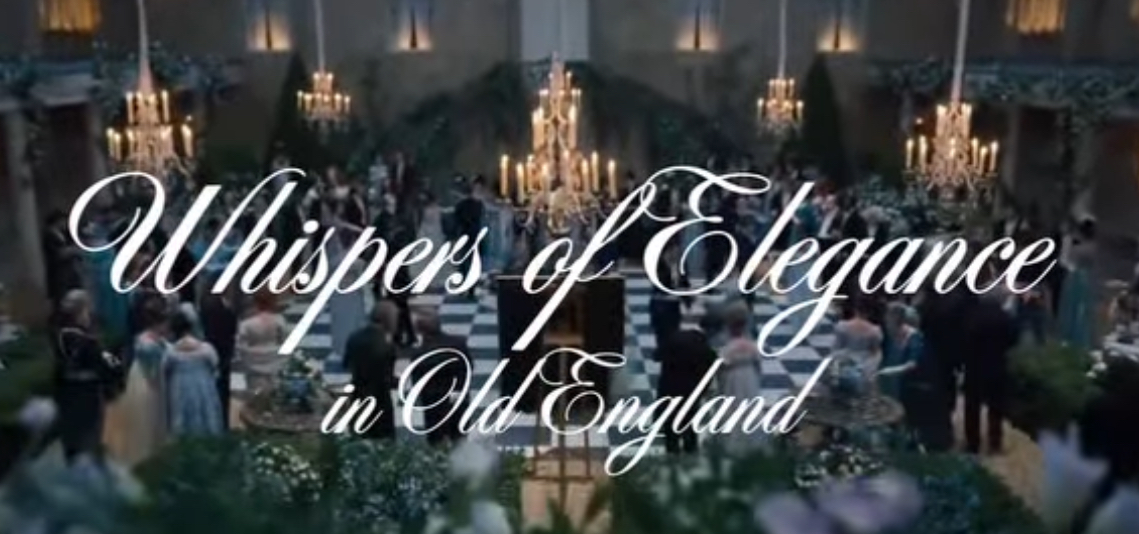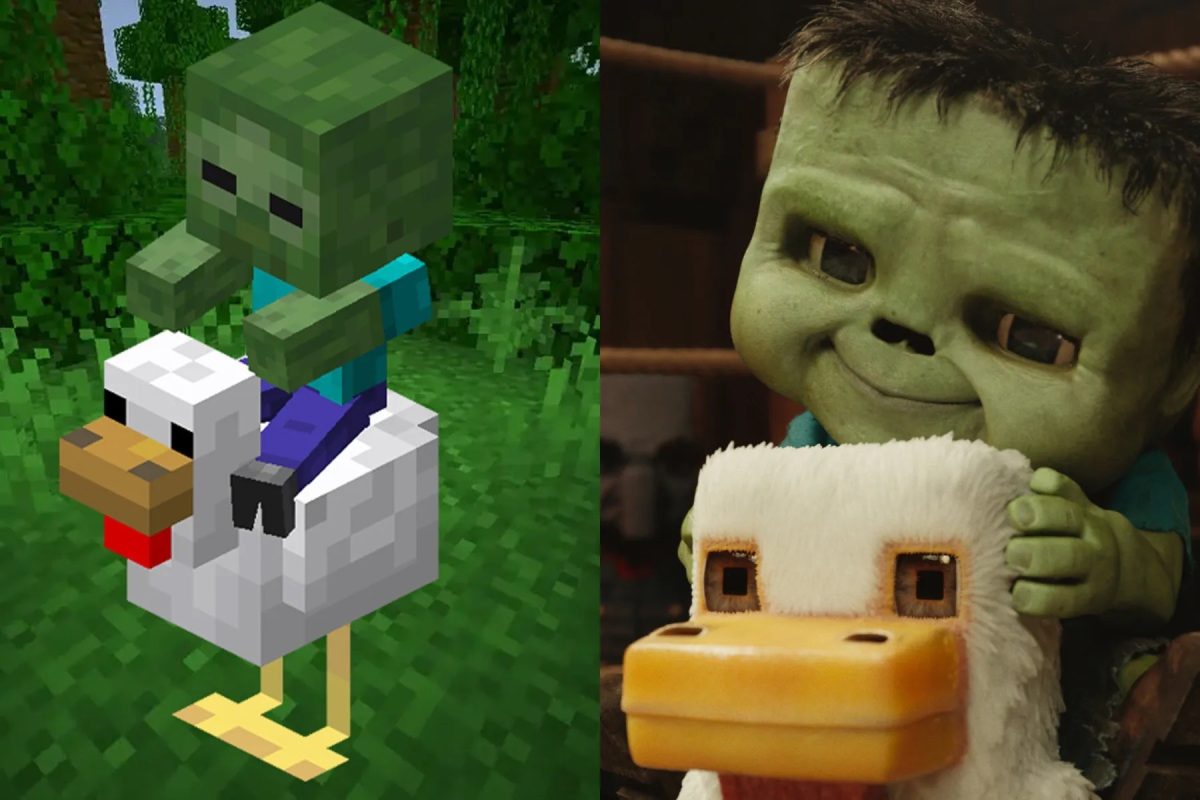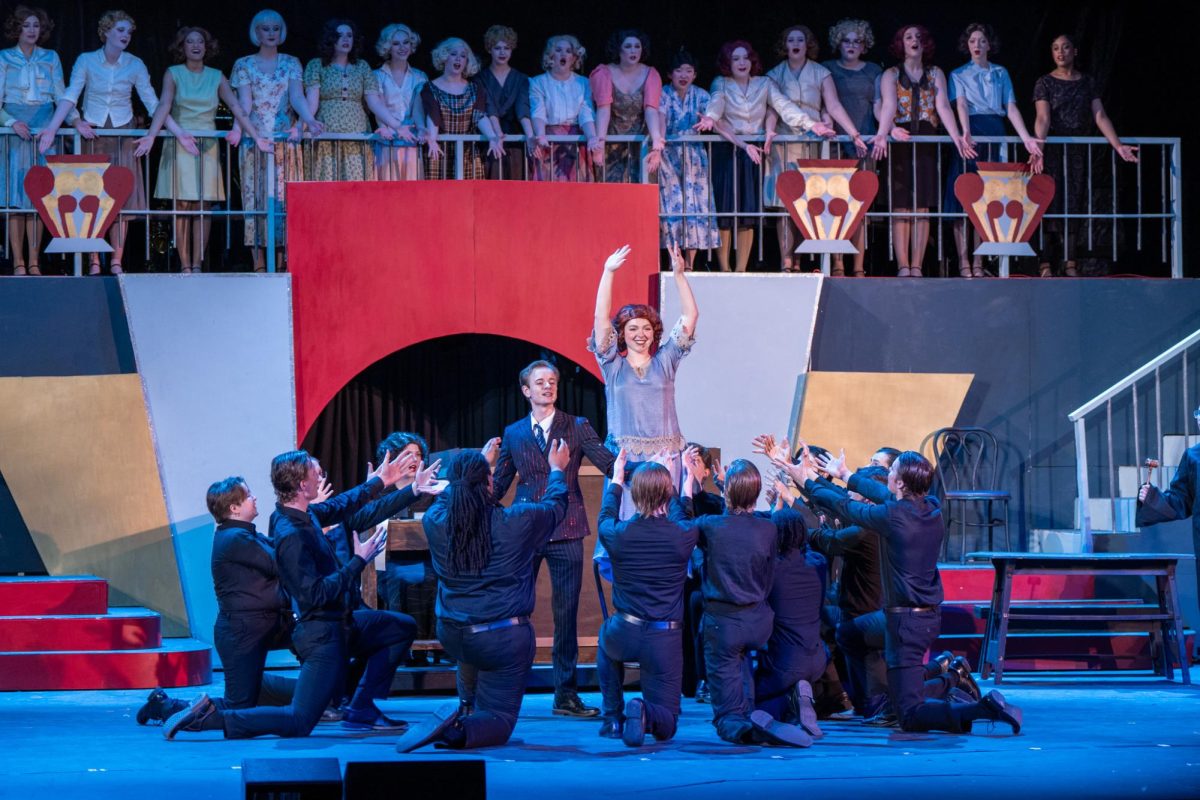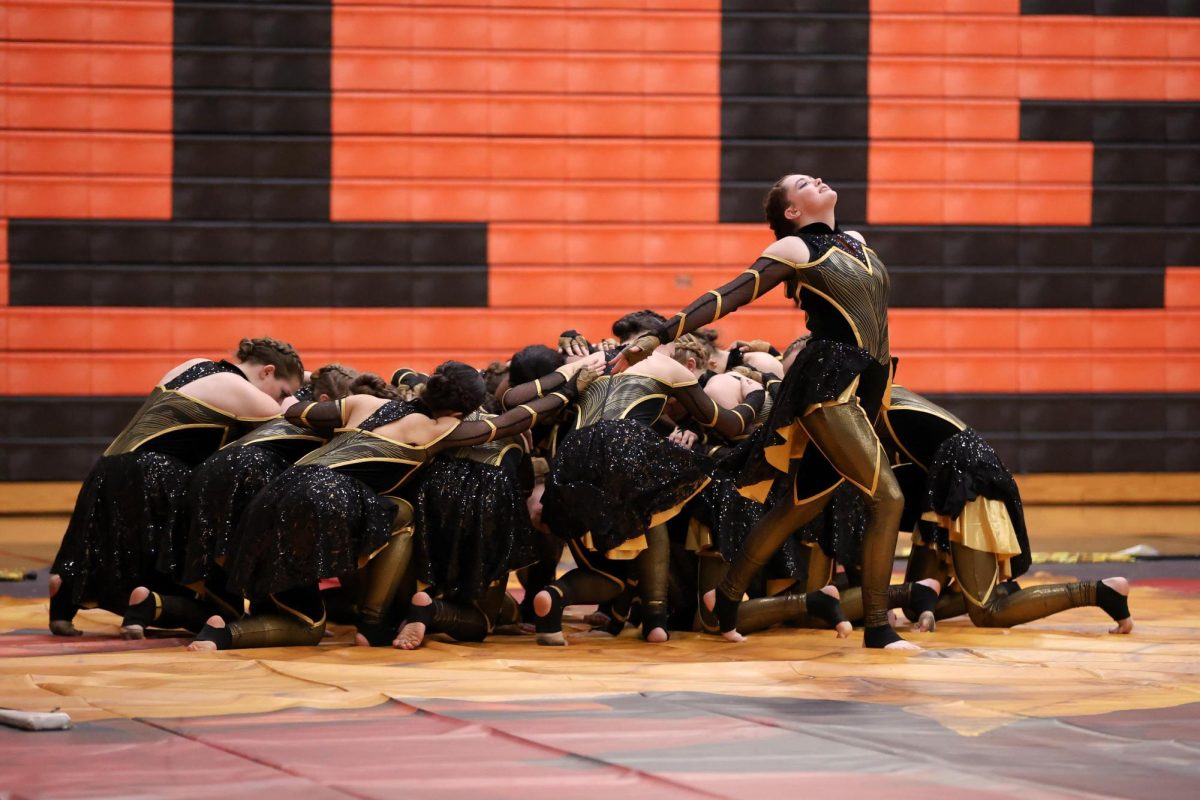‘The Green Knight’: Mess or Masterpiece?
September 17, 2021
A man, clad in mustard and emerald, and a fox stumble along a storm-battered autumnal path. In his stupor the wanderer falls next to a growth of mushrooms among the leaves, which the pair ravenously consume, despite the violent winds. Consequently, the rich nature falls away and the companions find themselves isolated on a stark cliffside, surrounded by dark giants.
The rich scene is but one example of the menagerie available within “The Green Knight”, David Lowery’s Arthurian title released by A24 in July.
The retelling has been praised by the Atlantic, Polygon and Vanity Fair:
“It’s the movie Lowery was born to make, a dreamy piece of high fantasy that bombards the viewer with visual delights, skimps on all but the most essential dialogue, and turns an age-old tale into something to be puzzled over anew,” The Atlantic’s David Sims said.
The eccentric film focuses on the travels of Gawain (Dev Patel), the nephew of the famed Arthur, loosely following the plot of “Gawain and The Green Knight”, a tale out of the Fisher King mythos.
While this familiar plot sets the film’s pace, that’s about all. The quest’s true vibrancy, and originality, lies in Lowery’s manipulation of the senses, visual and auditory.
Gawain’s journey is steeped in rich, tapestry-esque visuals that immerse the viewer fully. No aspect is forgotten: the makeup, elegantly muted and ruddy; the sets, period accurate and desolate; and the costumes, directly out of medieval illustration.
Yet, as masterful as the bleak periodicity is, the film could be riddled with iPhones and Starbucks and no one would notice for the stunning color.
Lowery’s film is a rich tapestry of kaleidoscopic grey and brown landscapes, made harsh and foreboding by the omnipresent vibrancy of Gawain and the titular knight.
Underpinning the stark visuals, the film’s distinct lack of scoring, and often speaking, creates a sense of hush which immerses the viewer in the varied and oppressive settings of the quest.
Unfortunately, the films understated plot doesn’t quite live up to the tonal beauty of Lowery’s cinematography and sound design.
The movie can’t decide what it wants to be. As it is, it exists as a coalition of disjointed scenes connected only by the actors within, feeling closer to a literary fever dream than a concrete plot.
Lowery seems to hint at chivalry, fatalism, nature and even pagan conversion, yet these voices vie for attention, creating a sense of muddled confusion by the end of the two hour film.
Plot misgivings aside, the timeliness and cultural impact of this film’s casting cannot be understated.
Gawain and the Green Knight is a classic English tale, the type of which inspires film regularly, take Disney’s “The Sword in the Stone” (1963) or “The Fisher King” (1991). In that sense, this story is nothing new, and honestly nothing to be remembered, but that’s without recognizing the impact of casting Patel as Gawain and Sarita Choudhury as his mother.
Both are Indian. Not only is telling a classic English story with stars of color perfectly ironic in light of whitewashing, it represents the culmination of a change in the industry that over the last century.
So is “The Green Knight” perfect?
No, not at all.
Is it worth watching?
Yes, its impactful casting demands as much. But further, despite some identity crisis and regardless of any deeper significance (or lack there of), the movie’s imagery speaks deeply to human nature and, frankly, just looks awesome.












